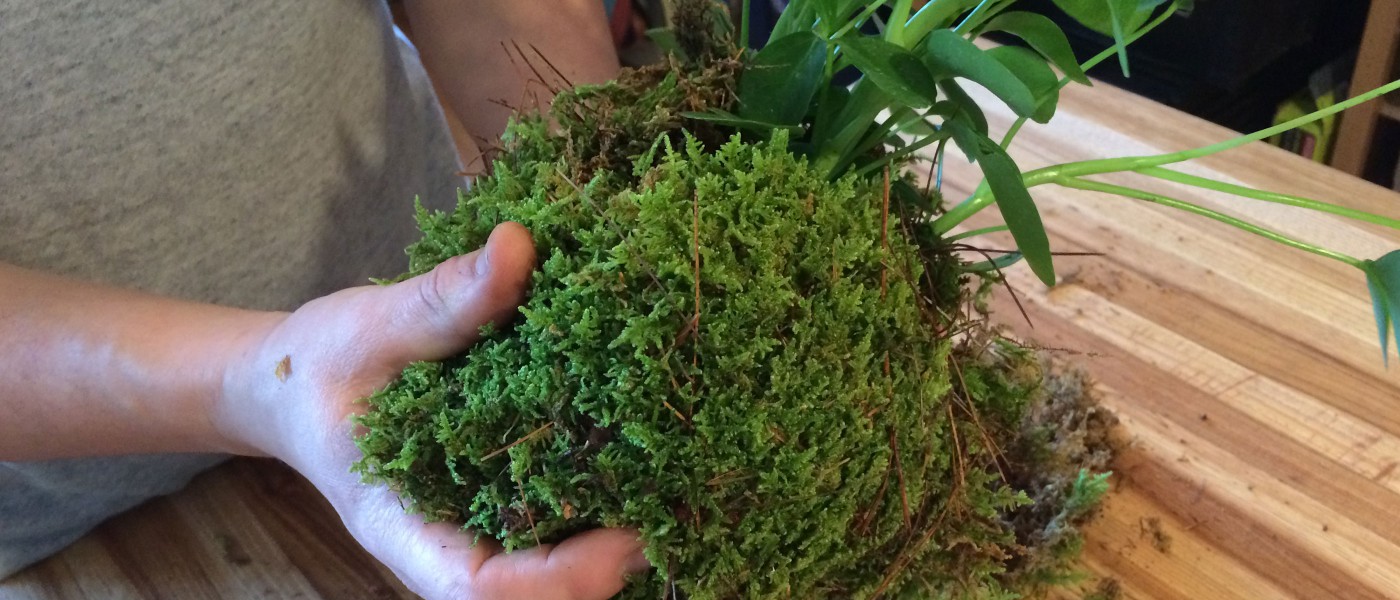DIY Kokedama: Japanese-Style Houseplant Display With Moss Balls
Kokedama (Japanese for "moss ball") is a style of potting up plants in a ball of moss and displaying them in a dish or suspended in the air. The style comes from a centuries-old tradition of exhibiting the exposed root ball of a bonsai specimen on a plate to highlight its elegant root system. As time passed, moss would accumulate on the roots, enhancing the display.
Today, kokedama are usually crafted into spherical shapes and are often made with houseplants rather than with trees and shrubs, the traditional bonsai plant material. In New York City, kokedama have become especially popular recently, perhaps due to their space-saving qualities—hanging kokedama do not take up valuable floor or shelf space.
You can make your own simple hanging kokedama at home with common houseplants like pothos or peace lily. Almost any plant can be made into a kokedama, but it's best to use ones that suit your living environment. For example, if you live in a dark apartment where the only window faces a brick wall, you'll want to use shade-tolerant plants like philodendron or pothos vines. If your place is sunny, choose plants that tolerate a lot of light, such as citrus, ficus, or croton, whose leaves aren't likely to be scorched by the sunlight. If your place is somewhere in between these two extremes, you're in luck, because there are hundreds of plants that prefer bright, indirect light.
Supplies
- A houseplant My favorite plants for kokedama are pothos, philodendron, peace lily, anthurium, dracaena, Norfolk Island pine, and ferns. You can make several kokedama in one session if you like.
- Potting mix Since the plant will be living in a constricted environment, it is necessary to have good aeration in your soil. The perlite and peat moss in conventional potting mixes will accomplish that.
- Fresh or dried sheet moss You can buy these online or at most local florists.
- Twine I prefer waxed thread, which is available at most craft stores, but you can also use dental floss or any non-biodegradable cord. Avoid cotton, jute, or hemp cord, as these tend to break down over repeated waterings, which means your kokedama will not hang for very long.
Instructions
Add enough water to your potting mix so that you can make a firm ball that doesn't crumble. Add more water if necessary, squeezing out any excess as you shape your ball. You should be able to throw your ball into the air and catch it without its crumbling apart.
Remove the plant from its pot, shaking off excess soil. Sculpt your ball around the roots, adding damp potting mix as needed.
Gently squeeze out excess water as you go. When I form kokedama for my plant store at the Brooklyn Flea, I try to make them as spherical as possible, but this is not absolutely necessary.
Lay out your sheet moss, place the ball in the center, and enfold the ball in the moss, trimming off any excess moss as you go.
Measure out two arm-lengths of waxed cord, floss, or polyester thread. Starting at one end of the string, tie a firm loop around the top-right side of the ball and make a double knot. Then, holding the ball in one hand to stabilize it, randomly wrap the string around the ball (except directly through the plant) to secure the moss, checking for roundness as you go.
Keep the string taut around the plant. If the string it too loose, you will not be able to suspend it. Once you have come to the end of your string, tie it off on a neighboring string on the ball. If you think you need more string, you can add it to the ball at this time.
Once you're happy with the shape of your ball, cut a new piece of string about a foot long (or double the length of the top of your plant), and tie it onto one side of the plant. I like to tie it to several neighboring strings on the ball to make it more secure when it's suspended. Repeat this step with the end of the string on the other side of the ball.
Pick up the ball from the strings and determine which way it's leaning. Add a third piece of string to stabilize so that you have a tripod of strings.
With all strings firmly secured to your moss ball, lift the ball by the strings and play around with the strings like a puppeteer until the plant is centered in the middle. Pinch the end strings about three inches down from the top and tie a knot so that you have a loop. You can now hang your kokedama.
To water your new kokedama, simply soak the entire ball in a bowl or pitcher of water for 20 to 30 minutes once a week. When you take the ball out of the water, gently squeeze it to remove any excess water until it stops dripping. Between waterings you can also mist the moss to keep it fresh and green.


